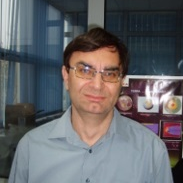Preprint
Article
Modeling and Simulation of a Novel Piezo-Motor Based on Piezoelectric Properties of Pb(1-x)Srx(Ti0,48Zr0,52)(1-y)NbyO3 Ceramics
Altmetrics
Downloads
473
Views
436
Comments
0
This version is not peer-reviewed
Submitted:
21 May 2019
Posted:
22 May 2019
You are already at the latest version
Alerts
Abstract
First of all the paper presents a solid solution of piezoelectric ceramic that was synthesized according to the general formula Pb(1-x)Srx(Ti0.48Zr0.52)(1-y)NbyO3 with x = 0.05 and y = 0.02, using wet ceramic processing technology and using an oxide mix as prime material. The effects of dopants (Sr2+ and Nb5+) on phase constitution, on microstructure and on the dielectric and piezoelectric properties were determinate. The Zr/Ti ratio was chosen near the morphotropic phase boundary of the PZT system in studied composition. The XRD data revealed that the PZT doped composition had tetragonal perovskite structure. Secondly the paper presents the design of the novel piezo-motor based on a surface wave which translates the linear extension of different piezoelectric segments of a piezoelectric cylinder into a rotational bending movement. This rotational bending of the piezoelectric cylinder is then transformed into a continuous rotation of the rotor through a calculated contact. The design of the motor takes advantage of the high piezoelectric constants of the developed material in an optimal way in order to increase the energetic efficiency. A brief mathematical model of electromechanical answer of piezoelectric materials is presented as it was used in the modeling of the material during the numerical simulations.

Keywords:
Subject: Chemistry and Materials Science - Materials Science and Technology
Copyright: This open access article is published under a Creative Commons CC BY 4.0 license, which permit the free download, distribution, and reuse, provided that the author and preprint are cited in any reuse.
MDPI Initiatives
Important Links
© 2024 MDPI (Basel, Switzerland) unless otherwise stated





